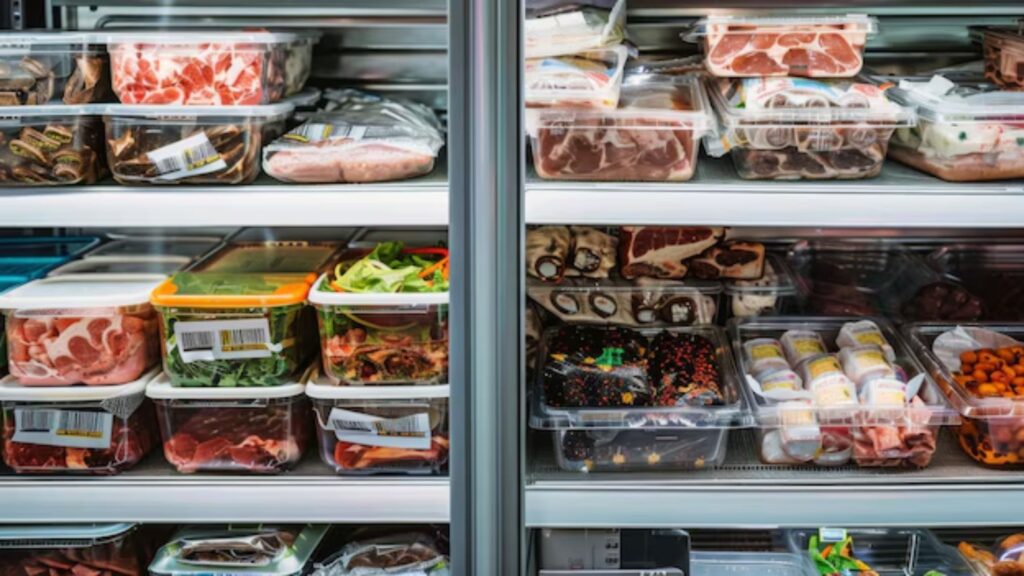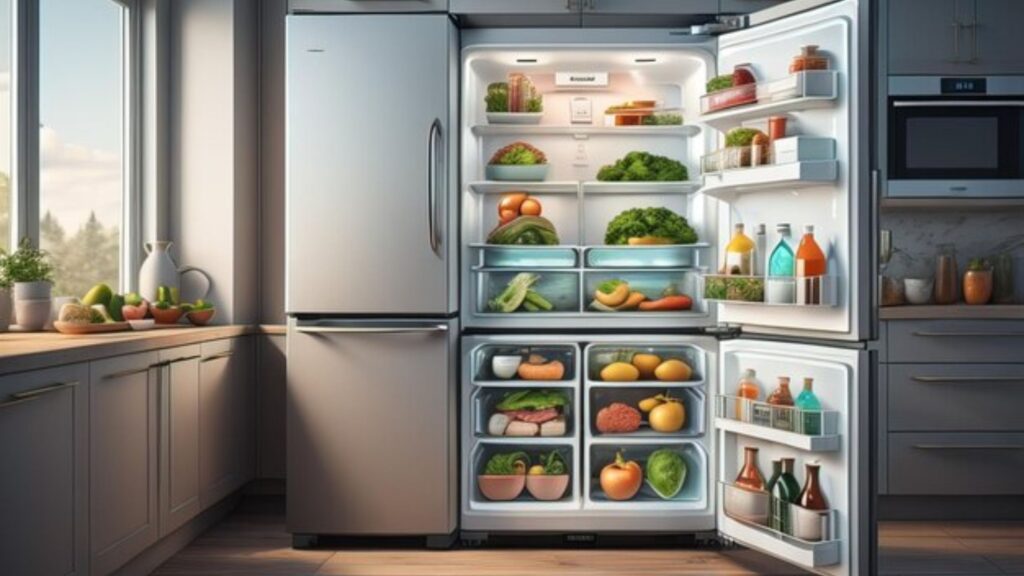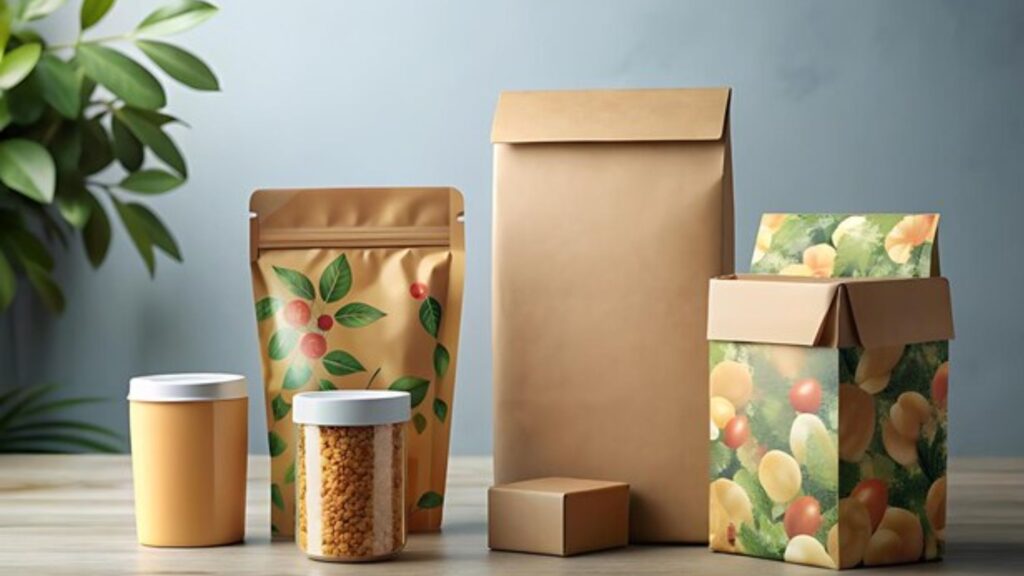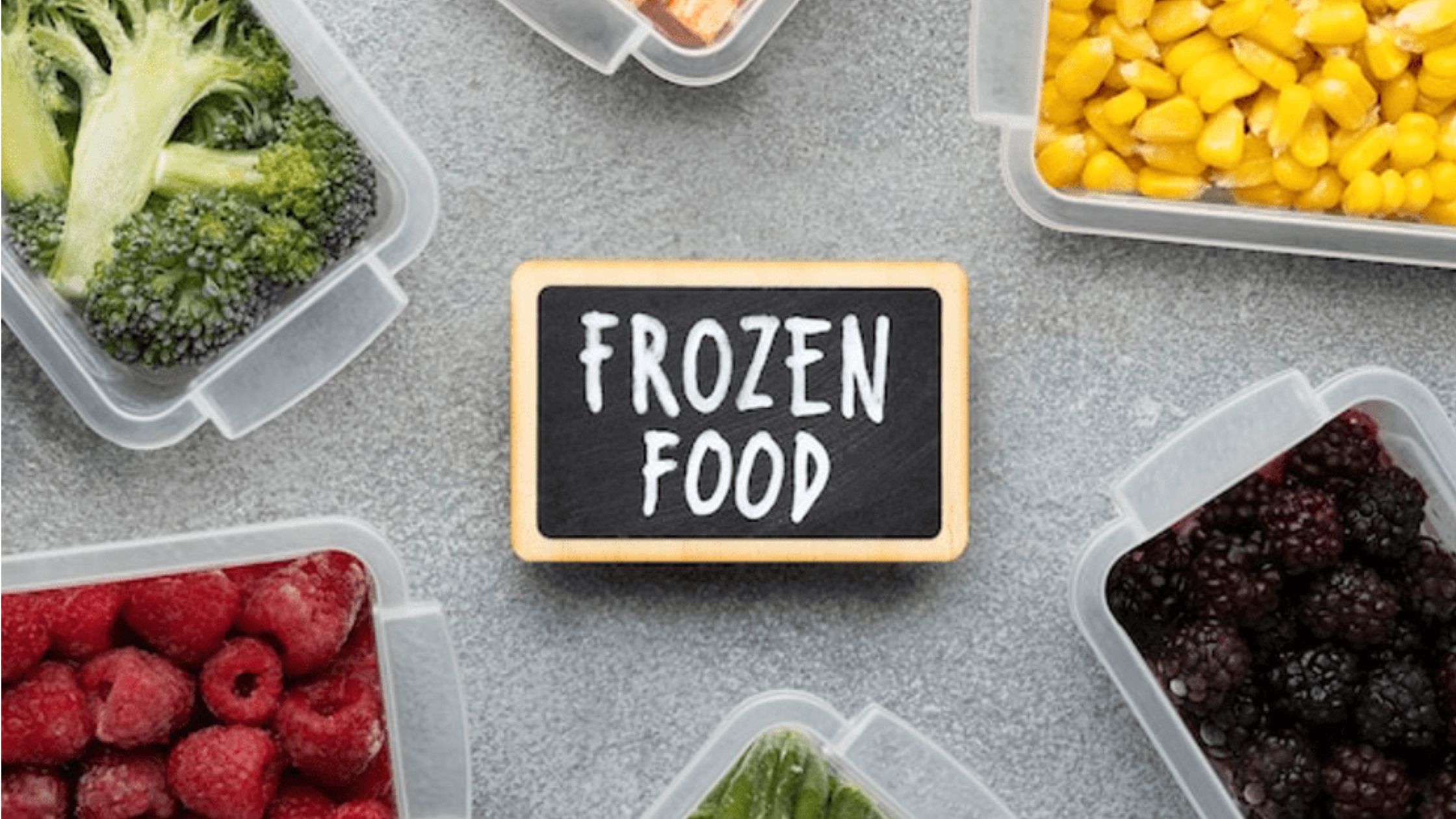The following are ways to start a frozen food business with low investment and simple strategies. First, research the market thoroughly so you can understand local demand, competition, and potential customer preferences. This will help you identify niche markets and customize your products.
Equipment required includes a freezer and basic packing materials. To keep costs low, start from home or a small rented space. Make sure to follow local health and safety standards so that there are no problems in the future.

Focus on a few core products initially. This approach will help you streamline production, manage inventory, and maintain quality. Building strong relationships with local suppliers can also reduce costs and ensure a steady supply of ingredients.
Table of Contents
Reach out to your target audience using digital marketing and social media. Create a simple online presence to showcase your products and connect with potential customers. Offer promotions or sample products to attract initial customers.
Finally, prioritize customer feedback and continuously improve your products based on their preferences. This approach will help you build a loyal customer base and expand your business over time.
Here are the steps to start a frozen food business with low investment:
1. Steps for Effective Market Research for a Frozen Food Business
Conducting in-depth market research is extremely important to start a successful frozen food business. This includes gathering information on local demand. Understand what types of frozen food products are popular in your area and what products are missing in the market that you can fill. This research will help you assess your market size and potential demand.
Check out current trends in the frozen food industry. Learn what types of flavors, health-related options, or convenience products are becoming popular. For this, you can review industry reports, study consumer behavior, and keep an eye on emerging trends. Understanding these trends can help you align your product offerings with current customer needs.

Check out existing competitors in the market. Identify who they are, what products they offer, and what their pricing strategies are. Analyze their strengths and weaknesses to understand how you can differentiate your products. This competitive analysis will help you understand the market landscape and shift your business strategy effectively.
Get information from potential customers about their preferences and shopping habits. For this, you can conduct questionnaires, focus groups, or analyze online reviews. Gaining an understanding of customer needs, product variety, quality, and price will help you guide your product development and marketing strategies.
Identify niche markets that have unfulfilled or special needs that are not being met by current products. This can be anything such as organic frozen food or specific ethnic cuisines. Targeting a niche market can help you stand apart and attract a loyal customer base.
By examining these aspects in depth, you will gain information that allows you to make informed decisions, customize your product offerings, and develop a business strategy that aligns with market needs and opportunities.
2. Procedure for Business Registration and Obtaining License for Frozen Food Business
The first step to starting a frozen food business is to register your business. This process gives legal recognition to your business and ensures that your business is officially recognized. For registration, you need to apply to the local business office or the relevant government agency. This process may ask for information on the name, location, and type of your business.
Along with business registration, it is also important to obtain the necessary licenses and permits to operate your business. These licenses can be at the local, state, or national level and ensure that your business is meeting all legal and regulatory requirements. For example, the food industry may require a food safety license, health department approval, and other related permits.

To ensure the legal status of your business, it is necessary to follow local health and safety regulations. These rules may include the hygiene of the production space, safe storage of food items, and health checks of personnel. This ensures that your products are safe for customers and protects your business from any legal problems.
By following these procedures, you can ensure that your frozen food business is legally recognized and adheres to all the necessary standards, which will contribute to the sustainability and success of your business.
3. Initial Cost of Equipment Required for a Frozen Food Business
When starting a frozen food business, it is important to invest in the necessary equipment. First of all, buying a good freezer is a must as it will help store your products at the right temperature, thereby maintaining their quality and safety. Apart from this, basic packing materials such as plastic bags, containers, and labels are also required. These materials are essential to safely pack your products and present them in the market.

Initially, consider starting the business from home or a small rented space to keep costs low. This allows you to limit the initial investment and cost of operation. Starting from home not only saves on rent but also provides you with more flexibility. Starting from a small rented space also gives you enough space for storage and production, allowing you to run your business smoothly.
By paying attention to these aspects, you can successfully manage the initial phase of your frozen food business and make the most of your investment.
4. Starting with limited products: Building a strong reputation from quality and consistency
When starting a frozen food business, it is a wise move to focus on a limited number of core products. Under this strategy, you can initially select a few key products that you can produce with high quality and consistency. This will help you organize your production processes, easily manage inventory, and maintain quality.

Paying special attention to product quality and consistency can help you establish a strong and positive reputation. Quality products will meet your customers’ expectations and bring them back to you again and again. Consistency means that your products will always be of the same quality, which increases customer trust and loyalty. When your products are consistently good, your reputation will be strong, and this will help your business grow.
Thus, by focusing on limited products, you can build a strong base and establish a credible brand image, which will contribute to the success of your business in the long run.
5.Developing effective packing and brand identity
It is extremely important to develop simple yet effective packing for your frozen food products. The right packing not only maintains the quality of the product but also attracts customers. For packing, using a solution like MyPerfect Pack can be a good option. It ensures that your products remain safe and fresh, as well as provides attractive and easy-to-use packing. Effective packing should have the ability to block air and moisture so that the freshness and taste of the product remains intact for a long time.

Also, it is important to develop a strong brand identity that resonates with your target audience. Brand identity includes your product packing design, logo, and brand colors, which reflect the uniqueness of your business. This identity makes your products stand out in the market and strengthens your image in the minds of customers. When customers recognize and like your brand, they are likely to buy your products again and again.
Thus, by using packing solutions like MyPerfect Pack and developing an impressive brand identity, you can give your frozen food business a professional and attractive look, thereby attracting customers while maintaining the quality of your product.
6.Building strong relationships with local suppliers: ensuring competitive prices and quality supplies
Building strong relationships with local suppliers is extremely important for running a frozen food business successfully. These relationships will help you get the ingredients you need at a competitive price, which can help control your costs. Collaborating with local suppliers not only helps you get better prices, but they can also ensure timely and reliable supplies.

To maintain a steady and quality supply of ingredients, it is important to build relationships with reliable suppliers. When you have a strong network of good suppliers, you can consistently maintain the quality of your products. These suppliers ensure timely delivery of ingredients, so your production schedules are not affected. Additionally, if suppliers pay special attention to your business, you can easily inform them about special needs and quality standards.
Thus, building strong and trusted relationships with local suppliers can not only help you cut down on costs but also ensure consistent and quality supply of ingredients for your frozen food business.
7. Choosing the right sales channels: local markets, online platforms, and increasing sales through partnerships
For the success of a frozen food business, it is important that you select your sales channels correctly. First, decide on the medium through which you will sell your products. Local markets, online platforms, or partnerships with local stores and restaurants can all be your sales channels. Each channel has its own advantages and challenges, and it is essential to select the most suitable channel according to your business goals and resources.

Partnering with local markets and stores gives you a chance to reach your customers directly. This channel can help you get instant customer feedback and build your presence in the local community. Also, partnering with local stores and restaurants allows you to deliver your products to their customers, which can increase your sales network.
Selling on online platforms allows you to reach a wider audience and ensure the availability of your products 24/7. This channel gives you the opportunity to promote your products through digital marketing and build direct contact with customers. Selling online requires having a good website or e-commerce platform that can provide an easy and secure shopping experience.
Thus, your sales channels play a vital role in the growth and success of your business. Choosing the right channel will help you reach your target customers effectively and make your frozen food business a success.
8.Investment of ₹1,00,000 to start a frozen food business: Details of expenses required
Starting a frozen food business requires an investment of around ₹1,00,000. This investment is enough to cover your initial costs and can ensure the stability and success of your business.
Initial costs mainly include expenses on equipment and materials. First of all, you need to buy a good freezer, which can cost around ₹50,000 to ₹70,000. The freezer will help keep your products fresh and safe, and without it you cannot start the business. Additionally, there will be expenses on packing materials such as plastic bags, containers, and labels, which can cost around ₹10,000 to ₹20,000.

Establishment and registration costs are also important. If you are not starting a business from home, you may have to rent a small space, which can cost ₹10,000 to ₹20,000 per month. Apart from this, business registration and necessary licenses can also cost ₹10,000 to ₹20,000.
Marketing and branding costs are also important. In this area, a budget of ₹10,000 to ₹20,000 can be kept for establishing and promoting your brand. This includes packaging design, logo, and initial promotion of your products.
It is also important to take care of emergency capital. It is advisable to create a reserve fund for unexpected expenses, which can range from ₹10,000 to ₹20,000.
Thus, overall, an investment of around ₹1,00,000 for starting a frozen food business is enough to cover your initial expenses and establish the business stably.
9. Profit Potential in Frozen Food Business: Based on Cost, Sales and Growth
The profit potential in frozen food business depends on the size of your business, demand for the product, and cost management. If you strategize correctly and offer quality products, you can earn quite a good profit.
To calculate your profit, you must first understand your production cost and selling price. Production costs include raw materials, packaging, and other operating expenses. If your total production cost is ₹50,000 and you sell it for ₹80,000, your profit amount will be ₹30,000.
Other factors that affect your profit are salaries and operating costs. If you start your business on a small scale and keep your costs low, your profit margins can be better. In the initial stage, the profit margin can range from 20% to 40%, but this percentage can increase as you sell more products and grow your business.

Your profitability can increase as the business grows. When you increase the demand for your product and make more sales, you can reduce your production costs and increase profits. For example, mass production can allow you to get discounts on purchases and reduce the cost per unit, thereby increasing profits.
Successful marketing and a strong customer base can significantly impact your profits. If you adopt effective marketing strategies and build strong relationships with your customers, you can achieve more sales and better profits. Customer satisfaction and recommendations also boost your business, increasing your sales and profits.
Thus, the profit potential in a frozen food business depends on your business operations, cost management, and marketing strategies. By working in the right direction and adopting effective methods, you can establish a stable and profitable business.
10. Customer Feedback Collection and Product Improvement
Customer feedback is extremely important for the success of a business, especially in the frozen food business where customer preferences and requirements may change from time to time. Collecting feedback from your customers helps you understand their preferences and provides the necessary information to improve your products. You can get feedback in various ways, such as surveys, online reviews, social media comments, or by directly talking to the customer.
Once you receive feedback, it is necessary to take it seriously and analyze it. Customer suggestions and criticisms can determine the direction of improvement in the quality of your products, packing, and service. For example, if many customers give negative feedback about the packing of your product, you can modify the packing design. Similarly, if customers feel the lack of a particular flavor or ingredient, you can make necessary changes in the recipe of your product.

Improvements made based on feedback increase customer satisfaction and strengthen your brand image. When customers see that you value their opinions and make changes according to their suggestions, they become more loyal and satisfied with you. This not only increases customer loyalty but also increases the chances of attracting new customers.
Thus, by properly collecting and analyzing customer feedback and making necessary improvements, you can improve the quality of your products and increase customer satisfaction. This process plays a vital role in the long-term success and growth of your frozen food business.
Conclusion
Thus, to start a frozen food business with low investment and simple strategies, you should study the market in-depth, control costs by selecting the necessary equipment and ingredients, and build strong relationships with local suppliers. By starting with a limited product range, you can streamline production and maintain quality. Expand your reach using digital marketing and social media, and continuously improve your products by prioritizing customer feedback. With all these measures, you can successfully establish your business and expand it over time.
If u want to Watch the Video You can visit to our You tube Businovations Channel and watch the video……
Click the link to read the Recent Posts….
Simple steps to start Gift Shop business in India with low investment (150)


One thought on “Effective Ways to Start a Frozen Food Business with Low Investment(154)”